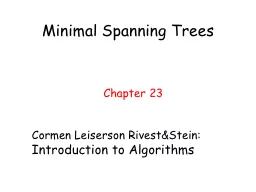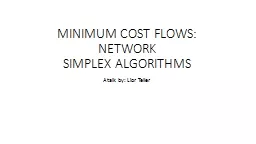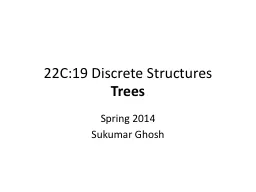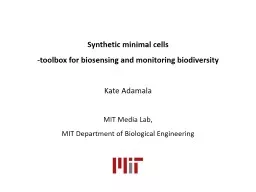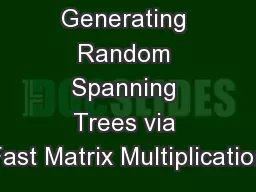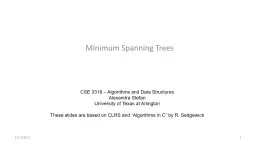PPT-Minimal Spanning Trees Chapter 23
Author : articlesnote | Published Date : 2020-08-05
Cormen Leiserson RivestampStein Introduction to Algorithms Minimal Spanning Trees Weighted Graphs GV E w W E R If w1 for all edges BFS is the solution The MST
Presentation Embed Code
Download Presentation
Download Presentation The PPT/PDF document "Minimal Spanning Trees Chapter 23" is the property of its rightful owner. Permission is granted to download and print the materials on this website for personal, non-commercial use only, and to display it on your personal computer provided you do not modify the materials and that you retain all copyright notices contained in the materials. By downloading content from our website, you accept the terms of this agreement.
Minimal Spanning Trees Chapter 23: Transcript
Download Rules Of Document
"Minimal Spanning Trees Chapter 23"The content belongs to its owner. You may download and print it for personal use, without modification, and keep all copyright notices. By downloading, you agree to these terms.
Related Documents

